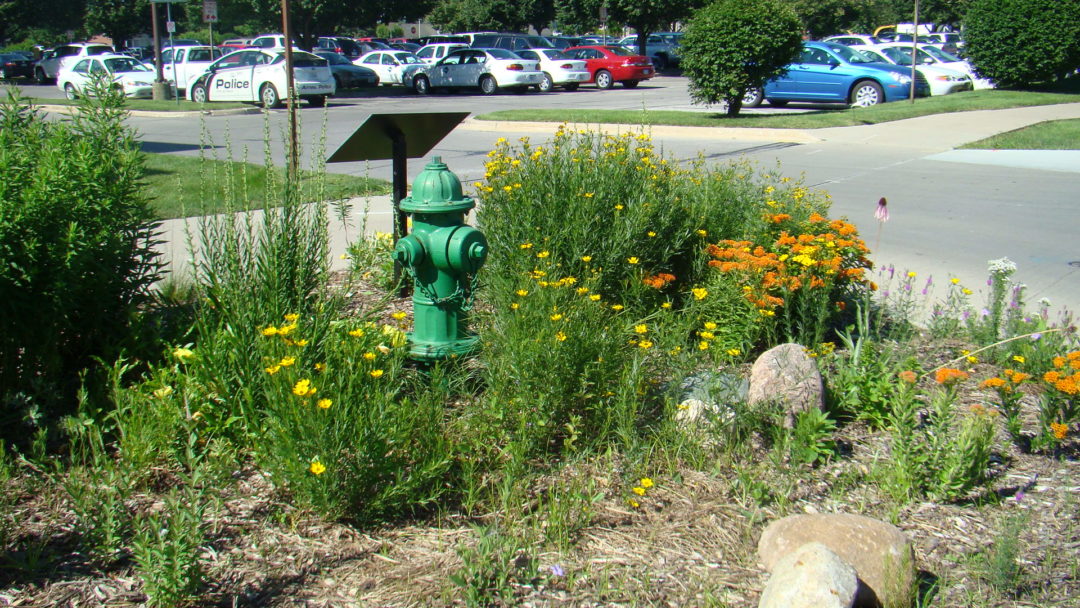Native landscaping reconnects our urban and suburban spaces with Iowa’s natural heritage while providing an effective way to manage rainfall. By incorporating plants that evolved in Iowa’s environment, we can create landscapes that not only look beautiful but also function as natural stormwater management systems.
The power of native roots
Native landscapes offer numerous advantages over conventional turf:
- Carbon sequestration: Deep roots store carbon in the soil for decades
- Resilience: Plants that evolved in Iowa’s conditions can withstand both drought and heavy rainfall
- Reduced maintenance: Once established, natives require little to no fertilizers, pesticides, and irrigation
- Lower long-term costs: Savings on mowing, watering, and chemical treatments
- Biodiversity support: Provides critical habitat for pollinators, birds, and beneficial insects
- Four-season interest: Diverse textures, colors, and forms throughout the year

Creating effective native landscapes
When incorporating native landscaping into your rainscaping strategy, consider placing a dense band of prairie or woodland plants on the downslope side of your property. This strategic placement allows the plants to filter and absorb rainfall and runoff before it leaves your property.
Native landscapes can take many forms. You might create a more traditional garden bed using native perennials maintained through hand weeding, similar to conventional perennial gardens. Alternatively, you could establish a prairie planting with a diverse mix of native grasses and wildflowers managed through occasional mowing or burning.
For residential settings, container-grown plants or plugs will establish more quickly than seeded areas. Apply mulch during the establishment phase to reduce weed competition. For larger areas, seeding diverse native mixes appropriate to your site conditions offers a cost-effective approach.
Establishment and acceptance
Remember that native plantings take two to three years to fully establish. During this time, regular care helps reduce weed competition and encourages root development. Once established, these plantings require significantly less maintenance than conventional lawns.
For visual appeal and neighborhood acceptance, consider creating defined edges or borders around more natural areas. This framing signals that the native landscaping is intentional and cared for, helping increase acceptance of this rainscaping approach.
By incorporating native landscaping into your property, you’re not only managing stormwater effectively but also creating valuable habitat for pollinators, birds, and other wildlife, contributing to a healthier watershed ecosystem for all.



